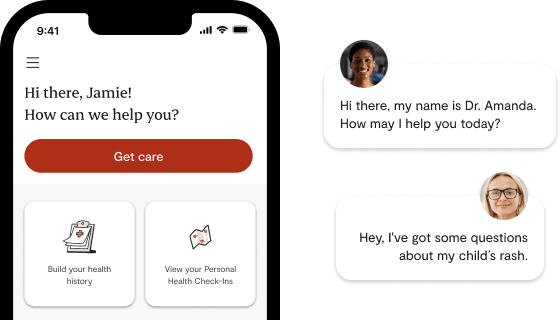The landscape of healthcare in Ontario has been revolutionized by the rise of online medical consultation in Ontario, offering unprecedented convenience and accessibility to quality medical care. With OHIP coverage for virtual visits and advanced technology platforms, Ontarians can now access licensed physicians from the comfort of their homes. This comprehensive guide will walk you through everything you need to know about virtual healthcare in Ontario.
Understanding Virtual Care in Ontario
Virtual care, also known as telemedicine or telehealth, enables patients to consult with licensed Ontario physicians through secure video calls or telephone consultations. Since December 1, 2022, Ontario’s new virtual care funding framework has established permanent OHIP coverage for both comprehensive and limited virtual care services.
The College of Physicians and Surgeons of Ontario (CPSO) defines virtual care as the practice of medicine delivered remotely, requiring physicians to maintain the same standards of care as in-person consultations. This ensures that patients receive high-quality medical attention regardless of the delivery method.
How to Prepare for Virtual Appointments
Pre-Appointment Preparation
Technology Setup:
-
Device Requirements: Ensure you have a smartphone, tablet, or computer with a working camera, microphone, and speakers
-
Browser Compatibility: Use Google Chrome, Microsoft Edge, or Safari for optimal performance
-
Internet Connection: Test your connection stability and consider sitting close to your Wi-Fi router during computer-based visits
-
Platform Testing: Many clinics recommend testing your device 24-48 hours before your appointment using provided test links
Documentation and Information:
-
Health Card: Have your OHIP card readily available for identity verification
-
Medication List: Prepare a complete list of current medications or have pill bottles visible during the video call
-
Pharmacy Information: Include pharmacy name, address, phone, and fax numbers for prescription transmission
-
Recent Vital Signs: Take your temperature, weight, and blood pressure if you have home monitoring equipment
-
Symptom Documentation: Write down symptoms, their duration, severity, and any relevant timeline
Physical Preparation:
-
Accessibility Items: Have glasses, hearing aids, walking aids, and any communication devices nearby
-
Wound Documentation: Prepare to show any rashes, wounds, or areas of concern to the camera
-
Quiet Environment: Choose a private, well-lit space free from distractions and background noise
-
Support Person: If needed, arrange for a family member or caregiver to assist during the consultation
Day of Appointment Checklist
15 Minutes Before:
-
Charge Devices: Ensure your device is fully charged or plugged in
-
Test Audio/Video: Verify your camera, microphone, and speakers are working properly
-
Prepare Notes: Have your questions and concerns written down with pen and paper ready
-
Background Check: Ensure your background and surroundings don’t reveal confidential information
During the Visit:
-
Punctuality: Be available 15 minutes before and 30 minutes after your scheduled time
-
Unknown Numbers: Answer calls from unknown or blocked numbers as these may be your healthcare provider
-
Clear Communication: Speak clearly, maintain eye contact with the camera, and confirm understanding
-
Privacy Confirmation: Confirm you’re in a private space and identify anyone else present
What Can Be Treated Through Virtual Medicine
Conditions Suitable for Virtual Consultations
Respiratory Conditions:
-
Common colds, flu symptoms, and seasonal allergies
-
Bronchitis and mild asthma flare-ups
-
Sinus infections and nasal congestion
-
Minor respiratory conditions not requiring emergency care
Chronic Disease Management:
-
Diabetes: Blood sugar monitoring, medication adjustments, and lifestyle counseling
-
Hypertension: Blood pressure review, medication management, and dietary guidance
-
Thyroid Disorders: Hormone level monitoring and medication titration
-
Mental Health: Anxiety, depression management, and ongoing psychiatric care
➲ See an Online Pain Management Doctor Ontario for Chronic Diseases
Minor Acute Conditions:
-
Urinary tract infections (UTIs) in adults
-
Skin conditions including rashes, eczema, and acne
-
Minor cuts, bites, and wound assessment
-
Eye conditions like conjunctivitis (pink eye)
-
Headaches and migraine management for known conditions
Routine Healthcare:
-
Prescription renewals and medication reviews
-
Follow-up appointments after in-person visits
-
Birth control consultations and women’s health concerns
-
Mental health counseling and therapy sessions
-
Preventive care discussions and wellness check-ins
Administrative Services:
-
Medical certificates and sick notes
-
Lab requisitions and imaging orders
-
Specialist referrals when appropriate
-
Travel health consultations
Conditions Requiring In-Person Care
Emergency Situations:
-
Chest Pain: Any crushing, radiating, or severe chest discomfort requires immediate in-person evaluation
-
Severe Shortness of Breath: Difficulty breathing at rest or inability to speak in full sentences
-
Neurological Symptoms: Sudden weakness, numbness, or stroke signs (F.A.S.T.)
-
Loss of Vision or Hearing: Sudden sensory changes require urgent assessment
-
High Fever: Temperature above 103°F (39.5°C) especially with systemic symptoms
Physical Examination Requirements:
-
Ear Infections: Otoscope examination necessary for accurate diagnosis of otitis media
-
Abdominal Pain: Severe or persistent abdominal pain requiring palpation and assessment
-
Joint Injuries: Sprains, fractures, or musculoskeletal injuries needing physical evaluation
-
Suspected Deep Vein Thrombosis: Leg pain and swelling requiring ultrasound assessment
Complex Medical Conditions:
-
Post-operative Care: Surgical wound assessment and complication monitoring
-
Unstable Mental Health: Severe psychiatric conditions requiring immediate intervention
-
Undifferentiated Acute Problems: New, complex symptoms requiring comprehensive physical examination
-
Procedures: Joint injections, IUD insertions, or any invasive procedures
Special Populations:
-
Prenatal Care: Pregnancy monitoring and newborn examinations
-
Pediatric Emergencies: Severe illness in children requiring hands-on assessment
-
Communication Barriers: Patients with hearing loss, cognitive impairment, or language barriers that impede virtual communication
Benefits of Virtual Care vs. Traditional Visits
Advantages of Virtual Consultations
Convenience and Accessibility:
-
24/7 Availability: Many platforms offer extended hours including evenings and weekends
-
No Travel Required: Eliminates commuting time, traffic, and parking challenges
-
Geographic Freedom: Access to specialists regardless of location, particularly beneficial for rural patients
-
Reduced Wait Times: Average virtual appointments offer 20-30 minutes compared to 7-8 minutes for in-person visits
Financial Benefits:
-
OHIP Coverage: Comprehensive virtual visits are fully covered for established patient-physician relationships
-
Cost Savings: Average savings of $50 per visit in travel costs and $43 in lost productivity
-
Reduced Absenteeism: Less time away from work, with financial benefits equating to thousands of dollars annually per employee
-
No Transportation Costs: Savings on gas, public transit, and parking fees
Health System Efficiency:
-
Reduced Emergency Visits: Virtual care can prevent 5-50% of unnecessary emergency department visits, saving the Canadian healthcare system up to $89 million annually
-
Fewer Missed Appointments: Virtual options reduce missed appointments by up to 50%, saving an additional $58 million annually
-
Better Chronic Disease Management: 80% of medical care could potentially be delivered virtually
-
Improved Continuity: Regular check-ins promote better long-term health outcomes
Patient Experience:
-
Infection Risk Reduction: Avoids exposure to contagious environments, particularly important for immunocompromised patients
-
Enhanced Privacy: Mental health consultations may be more comfortable in familiar home environments
-
Better Medication Management: Easy prescription renewals and detailed medication reviews
-
Family Involvement: Easier inclusion of family members or caregivers in consultations
When In-Person Care Remains Superior
Physical Examination Needs:
-
Diagnostic Accuracy: Certain conditions require hands-on assessment, palpation, and specialized equipment
-
Complex Procedures: Surgical consultations, biopsies, and invasive treatments
-
Pediatric Care: Children often require physical examination for accurate assessment
-
Cancer Screening: Mammograms, colonoscopies, and other screening procedures
Technology Limitations:
-
Digital Divide: Patients without reliable internet or technological literacy may struggle with virtual platforms
-
Audio-Visual Quality: Poor connection quality can compromise diagnostic accuracy
-
Limited Physical Assessment: Inability to perform complete physical examinations remotely
Therapeutic Relationships:
-
Initial Consultations: First-time visits often benefit from in-person interaction for relationship building
-
Complex Counseling: Sensitive mental health issues may require face-to-face intervention
-
Trust Building: Some patients prefer a personal connection for establishing therapeutic relationships
OHIP Coverage and Billing Structure
Comprehensive Virtual Care Services
For patients with existing physician relationships (seen in-person within 24 months or enrolled with the provider), OHIP covers:
-
Video Visits: 100% of the in-person fee rate using K300 modifier code
-
Telephone Visits: 85% of the in-person fee rate using K301 modifier code (95% for mental health services)
Limited Virtual Care Services
For patients without existing relationships, OHIP provides:
-
Video Consultations (A101): $20 per visit
-
Telephone Consultations (A102): $15 per visit
Requirements for Coverage
-
Both physician and patient must be physically located in Ontario during the consultation
-
Physicians must use Ontario Health-verified virtual visit solutions
-
Services must be medically appropriate for virtual delivery
-
Valid OHIP coverage is required (similar to in-person visits)
Choosing the Right Virtual Care Platform
Verified Platforms in Ontario
Major OHIP-Accepting Platforms:
-
Ogaei Virtual Healthcare: Comprehensive OHIP-covered services with positive patient testimonials
-
TELUS Health MyCare: 24/7 access with specialist referrals
-
Tia Health: Free virtual appointments in Ontario, Alberta, and BC
-
MD Connected: Toronto-based virtual healthcare with multilingual support
Selection Criteria
Technology Requirements:
-
PIPEDA Compliance: Ensure platforms meet Canadian privacy standards
-
Ontario Health Verification: Choose only verified virtual visit solutions
-
User-Friendly Interface: Platforms should be easy to navigate for all age groups
-
Technical Support: Availability of assistance for connection issues
Clinical Services:
-
Comprehensive Care: Ability to handle your specific health needs
-
Prescription Services: Electronic prescribing and pharmacy integration
-
Follow-up Care: Continuity options and care coordination
-
Specialist Access: Referral capabilities when needed
Future of Virtual Healthcare in Ontario
Emerging Technologies
Artificial Intelligence Integration: AI-powered triage systems and diagnostic support are enhancing virtual care capabilities
Remote Monitoring: Integration with wearable devices enables continuous health monitoring between virtual visits
Secure Messaging: The K303A billing code allows physicians to bill OHIP for patient messaging services, enhancing communication
Policy Developments
Regulatory Evolution: Provincial medical colleges continue refining virtual care standards to balance accessibility with quality assurance
Interprovincial Licensing: Ongoing discussions about pan-Canadian medical licensing may expand virtual care access across provinces
Frequently Asked Questions
How do I know if my condition is suitable for a virtual consultation?
Most routine health concerns, chronic disease follow-ups, prescription renewals, and minor acute conditions can be handled virtually. However, if you’re experiencing severe symptoms like chest pain, difficulty breathing, severe abdominal pain, or any emergency situation, seek in-person care immediately. When in doubt, many virtual platforms offer triage services to help determine the most appropriate care setting. Your virtual healthcare provider can also redirect you to in-person care if needed during the consultation.
What should I do if my internet connection fails during a virtual appointment?
Before your appointment, discuss contingency plans with your healthcare provider, including a backup phone number for reconnection. Most platforms have protocols for technical failures – typically, the provider will attempt to reconnect via phone or reschedule the appointment promptly. Ensure you have the clinic’s direct contact information and consider testing your connection beforehand. If using Wi-Fi, sit close to your router, and have your cellular data plan as a backup option.
Can I get the same prescriptions through virtual care as I would in-person?
Licensed Ontario physicians providing virtual care can prescribe most medications, including antibiotics, blood pressure medications, and mental health prescriptions. However, certain controlled substances may require in-person assessment for initial prescribing, though renewals might be possible virtually. Most platforms integrate with Ontario pharmacies for direct prescription transmission, and some offer prescription delivery services. Always inform your virtual provider about all current medications and any drug allergies.
How long does a typical virtual consultation last, and how soon can I get an appointment?
Virtual consultations typically last 15-30 minutes, often longer than traditional in-person visits which average only 7-8 minutes. Appointment availability varies by platform and urgency – some offer same-day appointments, while others may have wait times similar to traditional clinics. Many platforms provide 24/7 access or extended hours beyond typical clinic times. For urgent but non-emergency concerns, virtual care often provides faster access than traditional walk-in clinics.
What happens to my medical records from virtual visits?
Virtual care consultations must maintain the same medical record standards as in-person visits under CPSO regulations. Your virtual provider is required to create and maintain comprehensive medical records and make them available to other healthcare providers involved in your care when requested. Many virtual platforms can integrate with your existing healthcare team or send visit summaries to your online family doctor. Always ensure your chosen platform complies with Canadian privacy regulations (PIPEDA) and ask about record-sharing options during your consultation.
Conclusion
Online medical consultation Ontario have become an integral part of Ontario’s healthcare system, offering accessible, convenient, and OHIP-covered medical care for a wide range of health conditions. With proper preparation, understanding of appropriate use cases, and selection of verified platforms, virtual care provides an effective complement to traditional in-person healthcare.
The key to successful virtual healthcare lies in understanding when it’s appropriate, preparing thoroughly for consultations, and working with licensed Ontario physicians through verified platforms. As technology continues advancing and regulatory frameworks evolve, virtual care will play an increasingly important role in delivering quality healthcare to all Ontarians.
Whether you’re managing chronic conditions, seeking routine care, or addressing minor acute illnesses, virtual consultations offer a convenient, cost-effective, and clinically appropriate option that saves time, reduces costs, and improves healthcare accessibility across Ontario.
Sources:
-
College of Physicians and Surgeons of Ontario – Virtual Care Policy and Guidelines
-
Ontario Ministry of Health – Virtual Care Funding Framework and OHIP Billing Codes
-
Canada Health Infoway – Virtual Care Implementation and Patient Resources
-
Canadian Medical Association – Virtual Care Standards and Best Practices
-
Ontario Health – Virtual Visits Verification Program and Approved Solutions










